cultură şi spiritualitate
Murasaki Shikibu & The Tale of Genji
Defining author of Japanese literature in the Heian period
https://www.europeana.eu/ro/blog/murasaki-shikibu-and-the-tale-of-g...
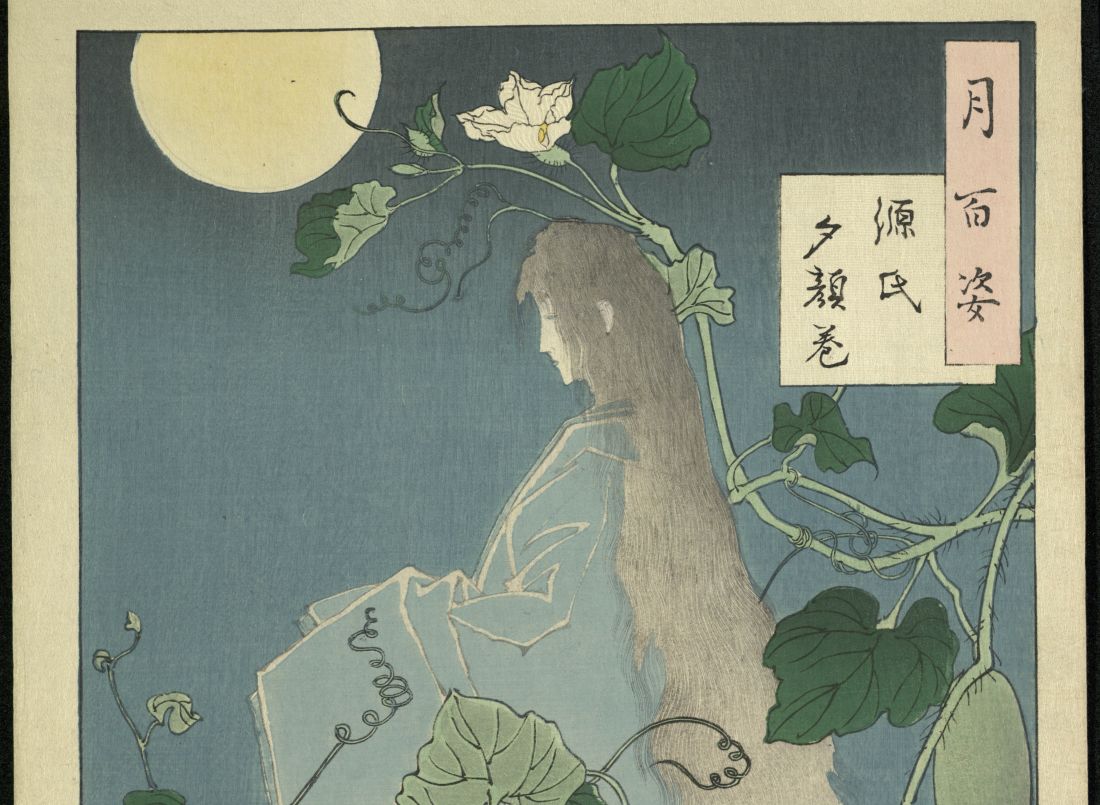
Murasaki Shikibu’s The Tale of Genji is sometimes said to be the first modern novel ever written: a fictional story set in the real world, with a sequence of events focusing on the psychological development of the main character and surrounding minor characters.
It was written in 11th century Japan by Murasaki Shikibu, an influential court lady-in-waiting. The Tale of Genji is one of the greatest Japanese classics of literature, which gives amazing insights into Japanese high society in a period of radical change.

During the Heian period (8th-12th Centuries CE), Japan became more and more independent and isolated from China, distinguishing itself in language, customs, and writing.
Murasaki grew up around this time, born into a low-ranking aristocratic family. Her father taught his son classical Chinese, as was customary. Murasaki listened in on the lessons and was soon more fluent in Chinese than her own brother. In this period, women were generally believed to be less intelligent than men and thus weren't taught the Chinese language. Her father would exclaim *'Just my luck, what a pity she was not born a man!' *
She would later combine all of these influences in her own literary work, making the Tale of Genji a remarkable testament to both Chinese and Japanese literary history.
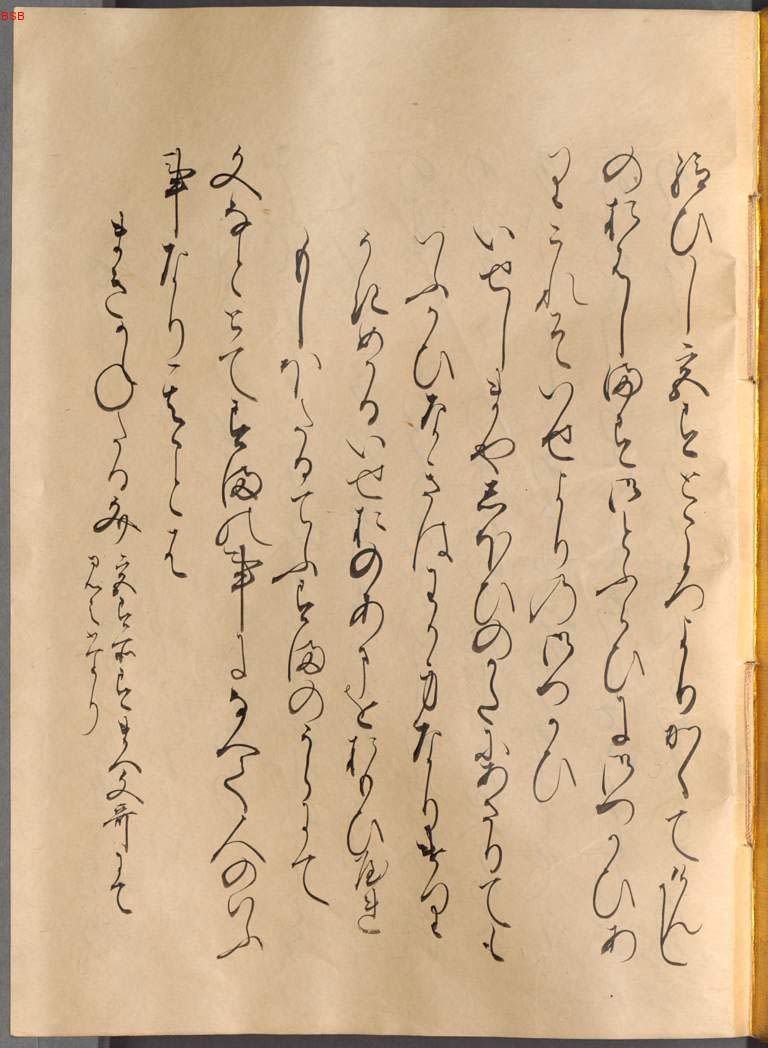
The tale of Genji was written in kana, a Japanese script derived from Chinese. Part of the individualisation of Japan from China showed in the development of its own writing around the second half of the 9th Century. The fact that Murasaki's work was written in this script cemented it as one of the earliest and most highly esteemed pieces of Japanese literature.
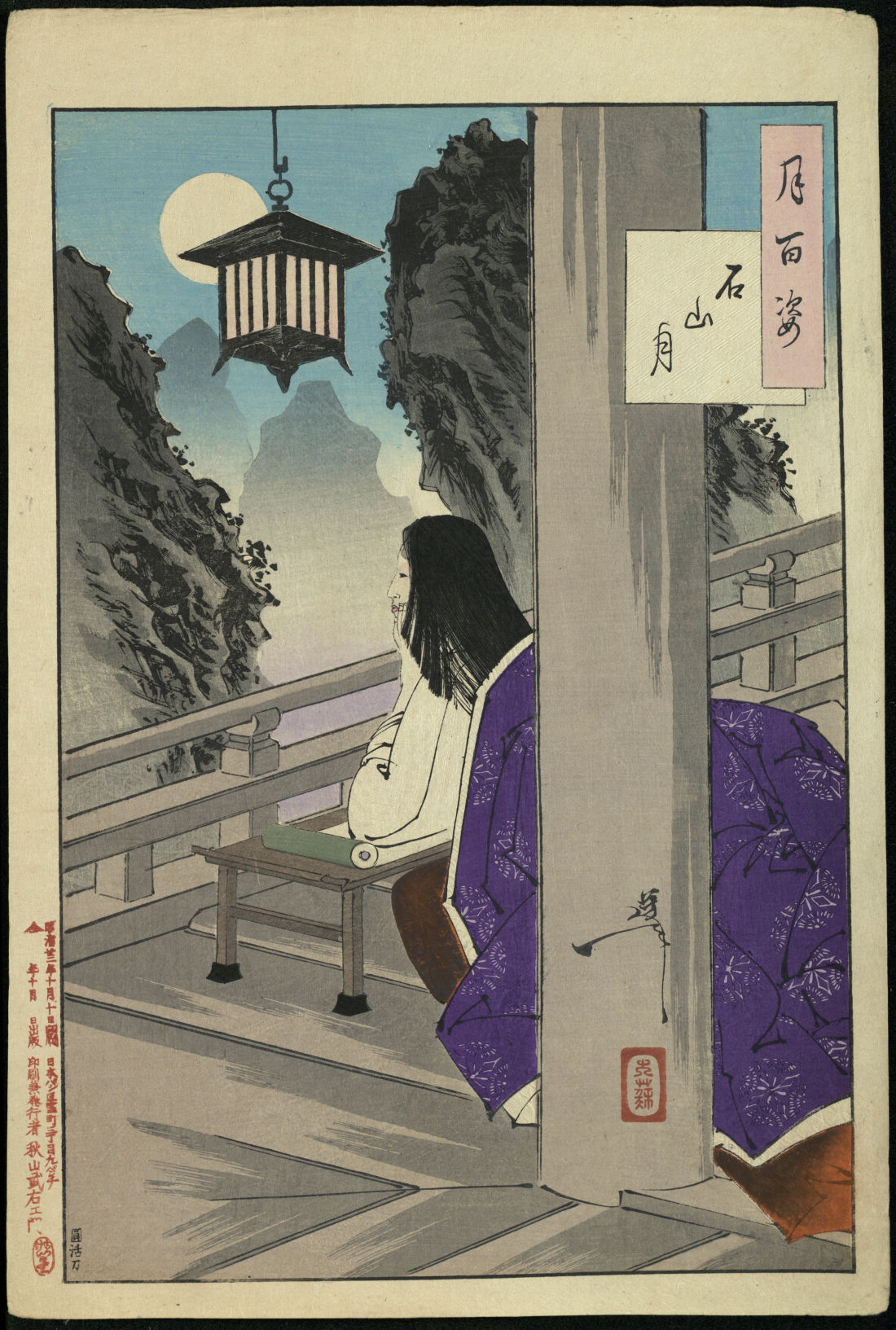
Murasaki got her name, confusingly, probably in reference to the main female character in her own famous novel the Tale of Genji. Murasaki Shikibu was not her given name, but the name used to describe her in the imperial court records and diaries handed down to us.
The name is also linked to the colour purple. When Murasaki is depicted, she is often wearing purple robes in reference to this. She's also often shown in Ishimyama temple, staring up at the moon during the night, wistfully, seeking inspiration. The legend says that it is here, looking at the moon, that the inspiration for The Tale of Genji came to Murasaki.
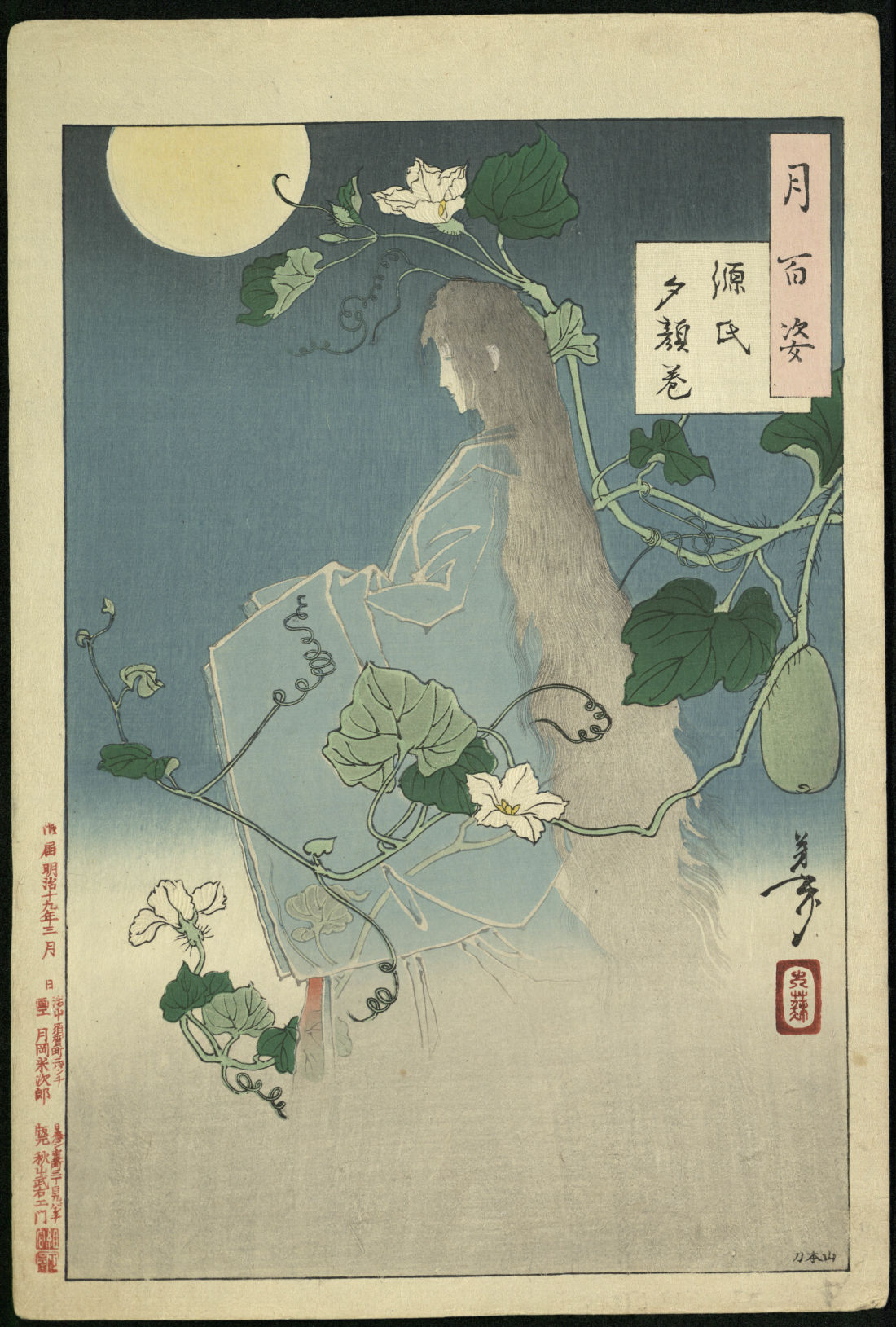
The novel describes the life of Genji, the son of a Japanese emperor, who is removed from the line of succession and instead pursues a career as an imperial officer. The book focuses on Genji's romantic exploits with multiple women, as well as the life and costumes at the Heian court.
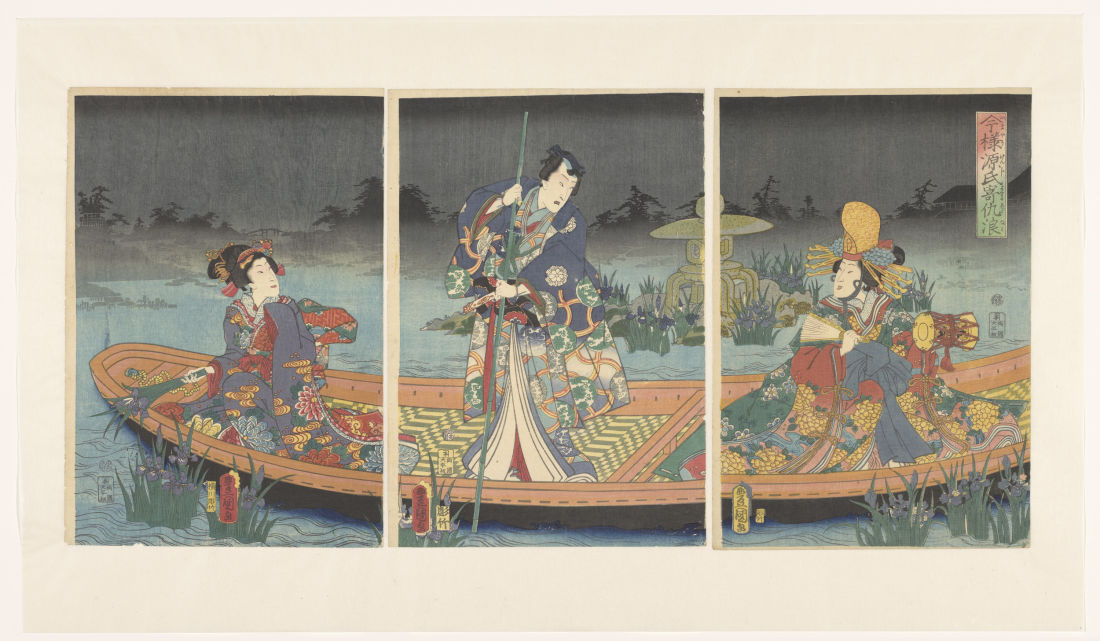
Murasaki drew from her own experience as a lady-in-waiting for the Japanese Empress Shōshi.
Women lived secluded from the men at the Japanese court, mostly busying themselves with writing diaries, creating poetry, and discussing literature in court salons. Even before the completion of The Tale of Genji, Murasaki became well-known for her poetry and writing excellence. Empress Shōshi sought out Murasaki as a companion and a tutor to add to her salon, increasing Shōshi's standing at court.
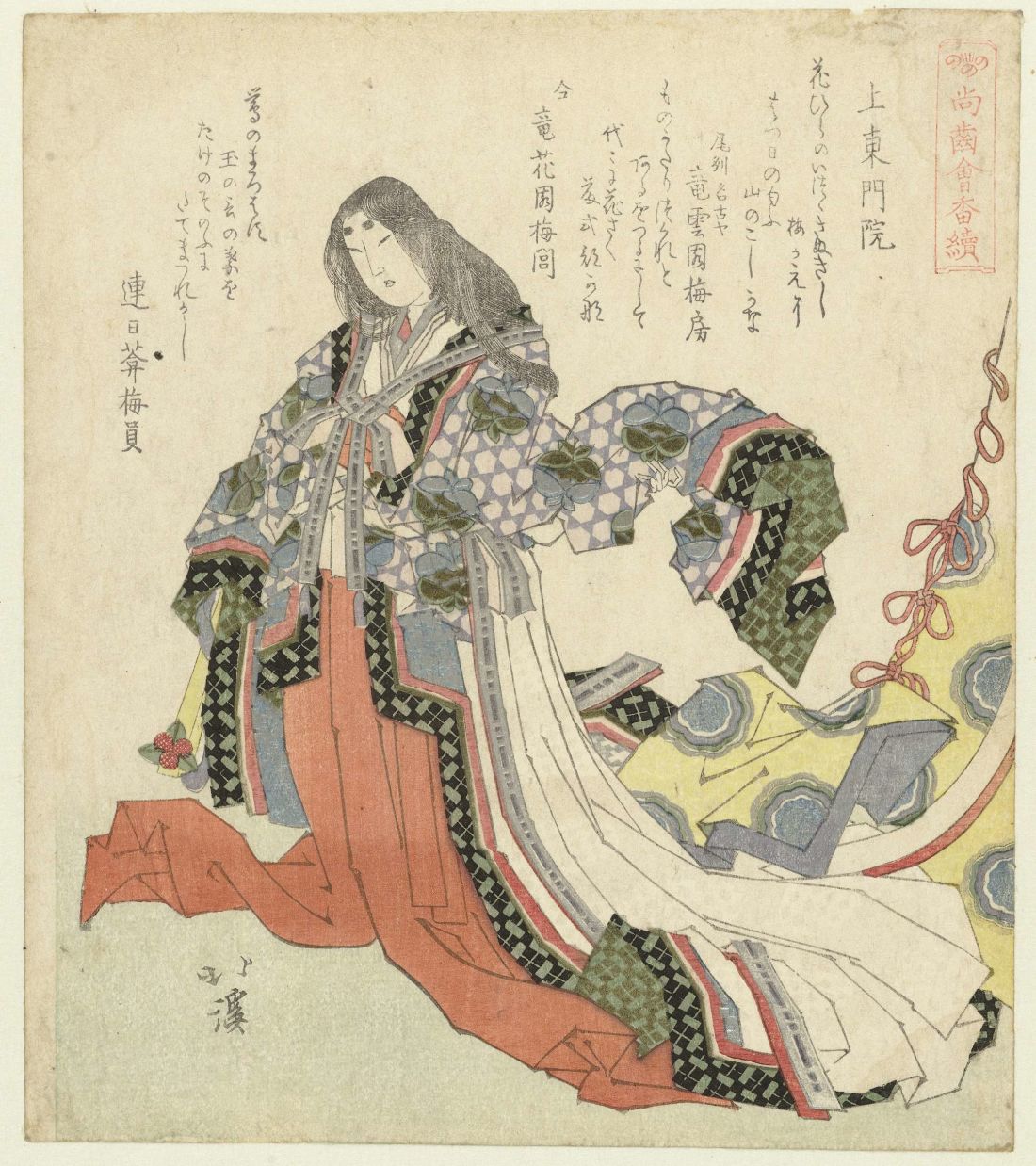
It's known that the novel was released in multiple volumes over a period of several years. Murasaki would have distributed handwritten copies of her chapters to friends, who would, in turn, have copied it and passed it onto others. Murasaki's book was a hot commodity all over Japan, many seeking out the new chapters so they could read the continuation of the story.
The novel was probably completed around 1021. Emperor Ichijō had the novel read to him, a rare occurrence since the book was written in Japanese, where it was customary for male courtiers to only deal with the Chinese language.
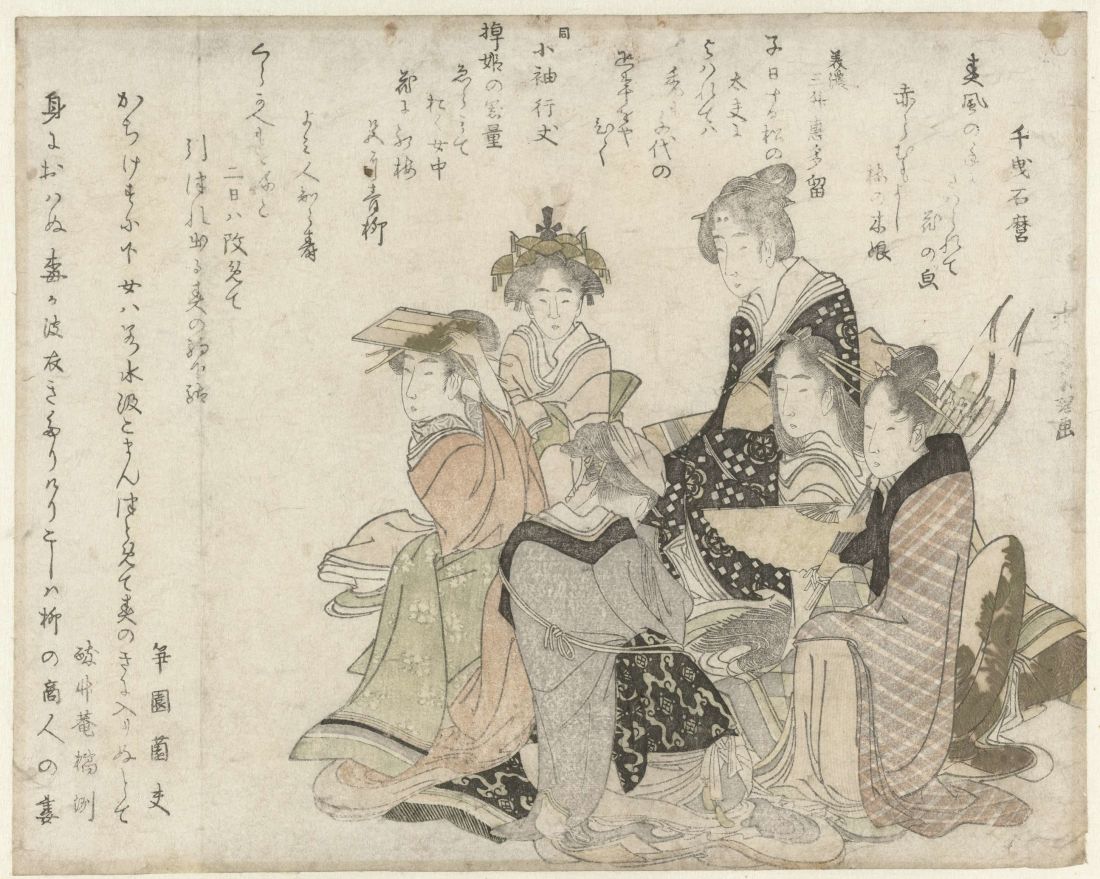
As The Tale of Genji was copied over and over and spread throughout Japan's provinces, during her life and certainly after her death Murasaki became a literary legend.
Murasaki's work became required reading for all court poets as early as the 12th Century. The emotionality and sensitivity shown in her writing made her works exemplary of Confucian philosophy.
Murasaki herself, as well as Genji and other characters from her books became popular topics in Japanese art. Scenes from the book were often depicted in woodblock prints and other ukiyo-e artwork, it became customary for dowries to include intricately carved artifacts or illustrations from The Tale of Genji.
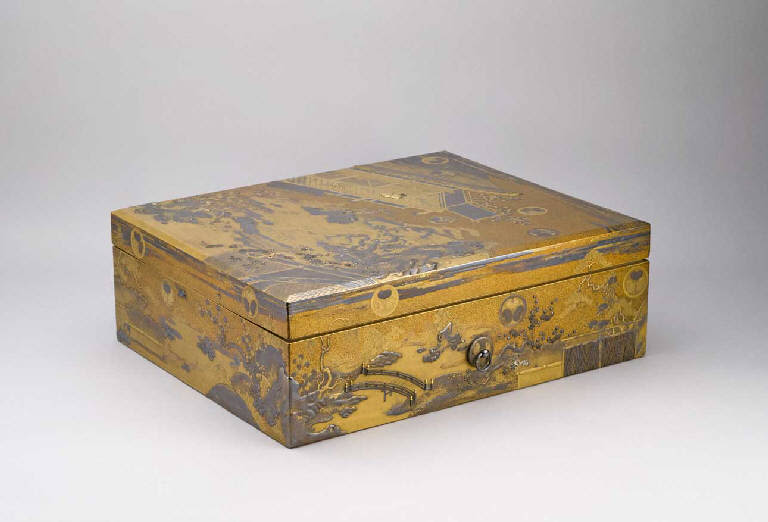
Murasaki's influence is still felt to this day, as a genius writer and courtesan who defied the norm of how women were thought of in that period.
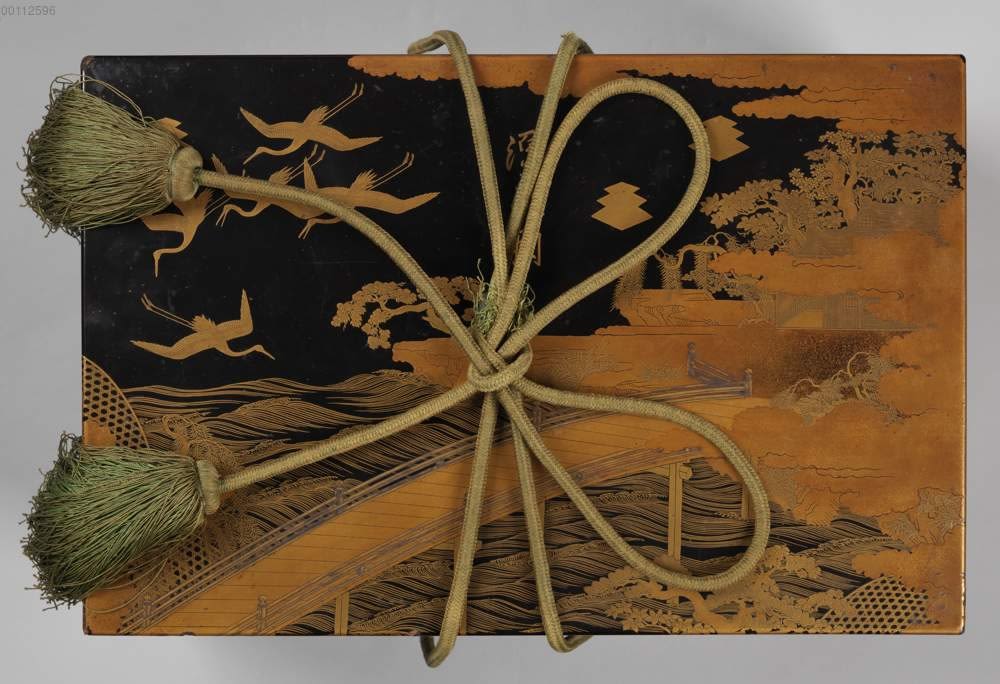
STATISTICI
Numar de steaguri: 273
Record vizitatori: 8,782 (3.04.2011)
16,676 (3.04.2011)
Steaguri lipsa: 33
1 stat are peste 700,000 clickuri (Romania)
1 stat are peste 100.000 clickuri (USA)
1 stat are peste 50,000 clickuri (Moldova)
2 state au peste 20,000 clickuri (Italia, Germania)
4 state are peste 10.000 clickuri (Franta, Ungaria, Spania,, Marea Britanie,)
6 state au peste 5.000 clickuri (Olanda, Belgia, Canada, )
10 state au peste 1,000 clickuri (Polonia, Rusia, Australia, Irlanda, Israel, Grecia, Elvetia , Brazilia, Suedia, Austria)
50 state au peste 100 clickuri
20 state au un click

DE URMĂRIT
1.EDITURA HOFFMAN
https://www.editurahoffman.ro/
2. EDITURA ISTROS
https://www.muzeulbrailei.ro/editura-istros/
3.EDITURA UNIVERSITATII CUZA - IASI
https://www.editura.uaic.ro/produse/editura/ultimele-aparitii/1
4.ANTICARIAT UNU
https://www.anticariat-unu.ro/wishlist
5. PRINTRE CARTI
6. ANTICARIAT ALBERT
7. ANTICARIAT ODIN
8. TARGUL CARTII
9. ANTICARIAT PLUS
10. LIBRĂRIILE:NET
https://www.librariileonline.ro/carti/literatura--i1678?filtru=2-452
https://www.librarie.net/cautare-rezultate.php?&page=2&t=opere+fundamentale&sort=top
14. ANTICARIAT NOU
https://anticariatnou.wordpress.com/
15.OKAZII
https://www.okazii.ro/cart?step=0&tr_buyerid=6092150
16. ANTIKVARIUM.RO
17.ANTIKVARIUS.RO
18. ANTICARIAT URSU
https://anticariat-ursu.ro/index.php?route=common/home
19.EDITURA TEORA - UNIVERSITAS
20. EDITURA SPANDUGINO
21. FILATELIE
22 MAX
http://romanianstampnews.blogspot.com
23.LIBREX
https://www.librex.ro/search/editura+polirom/?q=editura+polirom
24. LIBMAG
https://www.libmag.ro/carti-la-preturi-sub-10-lei/filtre/edituri/polirom/
https://www.libris.ro/account/myWishlist
http://magiamuntelui.blogspot.com
27. RAZVAN CODRESCU
http://razvan-codrescu.blogspot.ro/
28.RADIO ARHIVE
https://www.facebook.com/RadioArhive/
29.IDEEA EUROPEANĂ
https://www.ideeaeuropeana.ro/colectie/opere-fundamentale/
30. SA NU UITAM
31. CERTITUDINEA
32. F.N.S.A
https://www.fnsa.ro/products/4546-dimitrie_cantemir_despre_numele_moldaviei.html
Evenimente
Anunturi
 Această retea este pusă la dispoziţie sub Licenţa Atribuire-Necomercial-FărăModificări 3.0 România Creativ
Această retea este pusă la dispoziţie sub Licenţa Atribuire-Necomercial-FărăModificări 3.0 România Creativ

Parteneri
Note
Hoffman - Jurnalul cărților esențiale
1. Radu Sorescu - Petre Tutea. Viata si opera
2. Zaharia Stancu - Jocul cu moartea
3. Mihail Sebastian - Orasul cu salcimi
4. Ioan Slavici - Inchisorile mele
5. Gib Mihaescu - Donna Alba
6. Liviu Rebreanu - Ion
7. Cella Serghi - Pinza de paianjen
8. Zaharia Stancu - Descult
9. Henriette Yvonne Stahl - Intre zi si noapte
10.Mihail Sebastian - De doua mii de ani
11. George Calinescu Cartea nuntii
12. Cella Serghi Pe firul de paianjen…
Creat de altmariusclassic Dec 23, 2020 at 11:45am. Actualizat ultima dată de altmariusclassic Ian 24, 2021.
Top Members
© 2024 Created by altmarius.
Oferit de
![]()
Embleme | Raportare eroare | Termeni de utilizare a serviciilor










Pentru a putea adăuga comentarii trebuie să fii membru al altmarius !
Alătură-te reţelei altmarius